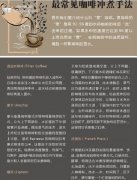Illustration of hand-made coffee making method
Published: 2025-12-27 Author: World Gafei
Last Updated: 2025/12/27,

Important Notice :
前街咖啡 FrontStreet Coffee has moved to new addredd:
FrontStreet Coffee Address: 315,Donghua East Road,GuangZhou
Tel:020 38364473
Coffee knowledge
making coffee
hand brewing coffee
Specialty coffee beans
Blue Mountain Coffee
drip coffee
moka pot
Flat white coffee
Coffee Latte
iced drip coffee
ICE-DRIP
Water Drip Coffee
ice drip coffee
ICE-DRIP
hand ground coffee
Coffee
Water Drip Coffee
Yirgacheffe
geisha coffee
Coffee website
drip coffee
pour-over coffee
Flat white coffee
moka pot
ground coffee
Coffee Latte
Blue Mountain Coffee
Huakui coffee
Specialty coffee beans
Yunnan Coffee
ice drip coffee
Dutch Coffee
iced drip coffee
ICE-DRIP
hand ground coffee
Coffee
Water Drip Coffee
Yirgacheffe
geisha coffee
ground coffee
Coffee Latte
coffee bean
Specialty coffee beans
- Prev

Introduction to common brewing techniques of fine coffee
- Next

Coffee beans, the world's top coffee, Blue Mountain Coffee.
The world-famous Blue Mountain Coffee, produced in the Blue Mountains of Jamaica, has been in short supply because of its low caffeine content (less than half of other coffees) and outstanding taste, catering to modern people's concept of healthy consumption. Blue Mountain Coffee beans, known as golden beans, are only found in the Blue Mountains of western Jamaica, more than 1800 meters above sea level.
Related
- Beginners will see the "Coffee pull flower" guide!
- What is the difference between ice blog purified milk and ordinary milk coffee?
- Why is the Philippines the largest producer of crops in Liberia?
- For coffee extraction, should the fine powder be retained?
- How does extracted espresso fill pressed powder? How much strength does it take to press the powder?
- How to make jasmine cold extract coffee? Is the jasmine + latte good?
- Will this little toy really make the coffee taste better? How does Lily Drip affect coffee extraction?
- Will the action of slapping the filter cup also affect coffee extraction?
- What's the difference between powder-to-water ratio and powder-to-liquid ratio?
- What is the Ethiopian local species? What does it have to do with Heirloom native species?

